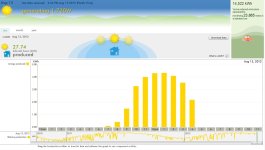whirly
Gold Member
- Joined
- Sep 3, 2011
- Messages
- 293
- Location
- Pepe'ekeo, HI
- Tractor
- Fordson Power Major, Kubota MX5100HST
Not sure how you got your result, but here's the rates by year, starting with year 0 and ending with year 20 (a 21 year window):
100
103.3
106.7089
110.2302937
113.8678934
117.6255339
121.5071765
125.5169133
129.6589715
133.9377175
138.3576622
142.923465
147.6399394
152.5120574
157.5449553
162.7439388
168.1144888
173.6622669
179.3931217
185.3130947
191.4284269
Each year's value is 1.033 times the previous year's value (a 3.3% increase).
The formula is simple:
(1+i)ⁿ where i= rate of increase and n= number of years. Therefore a 3.3% increase over 30 years is:
1.033 to the power of 30 or 2.64855 times the initial rate or 264.855% increase over 30 years.
